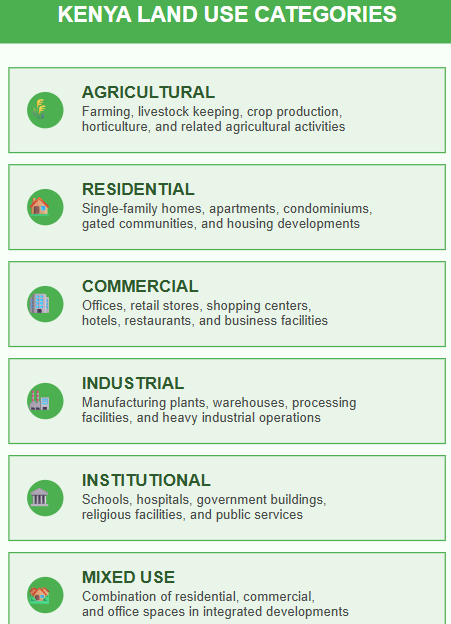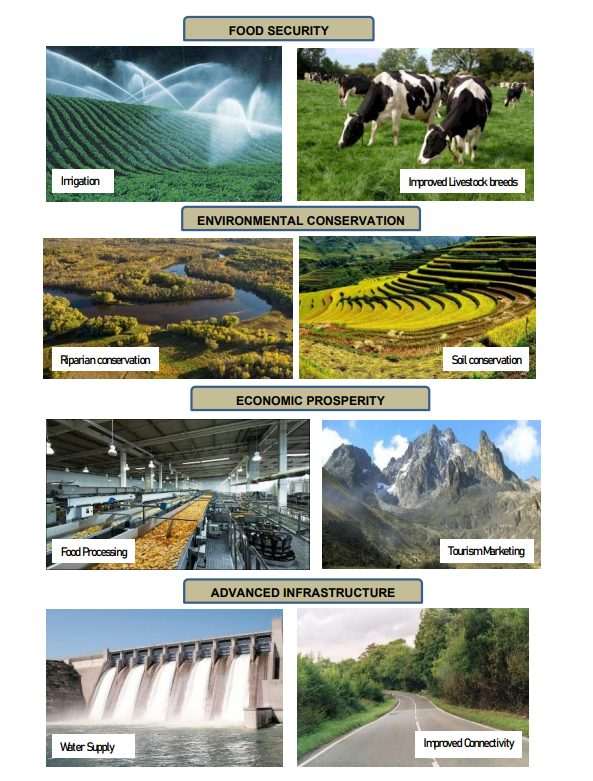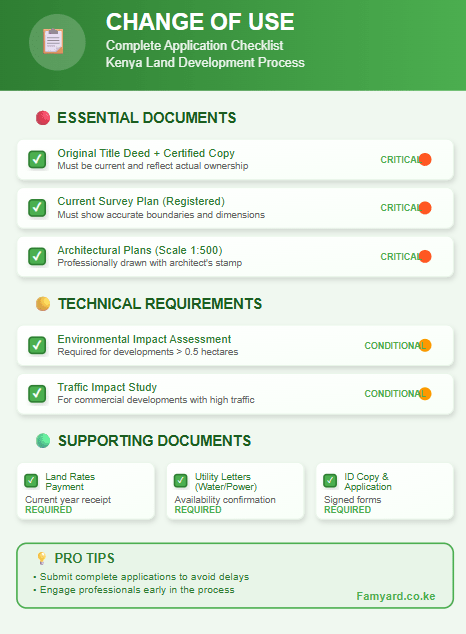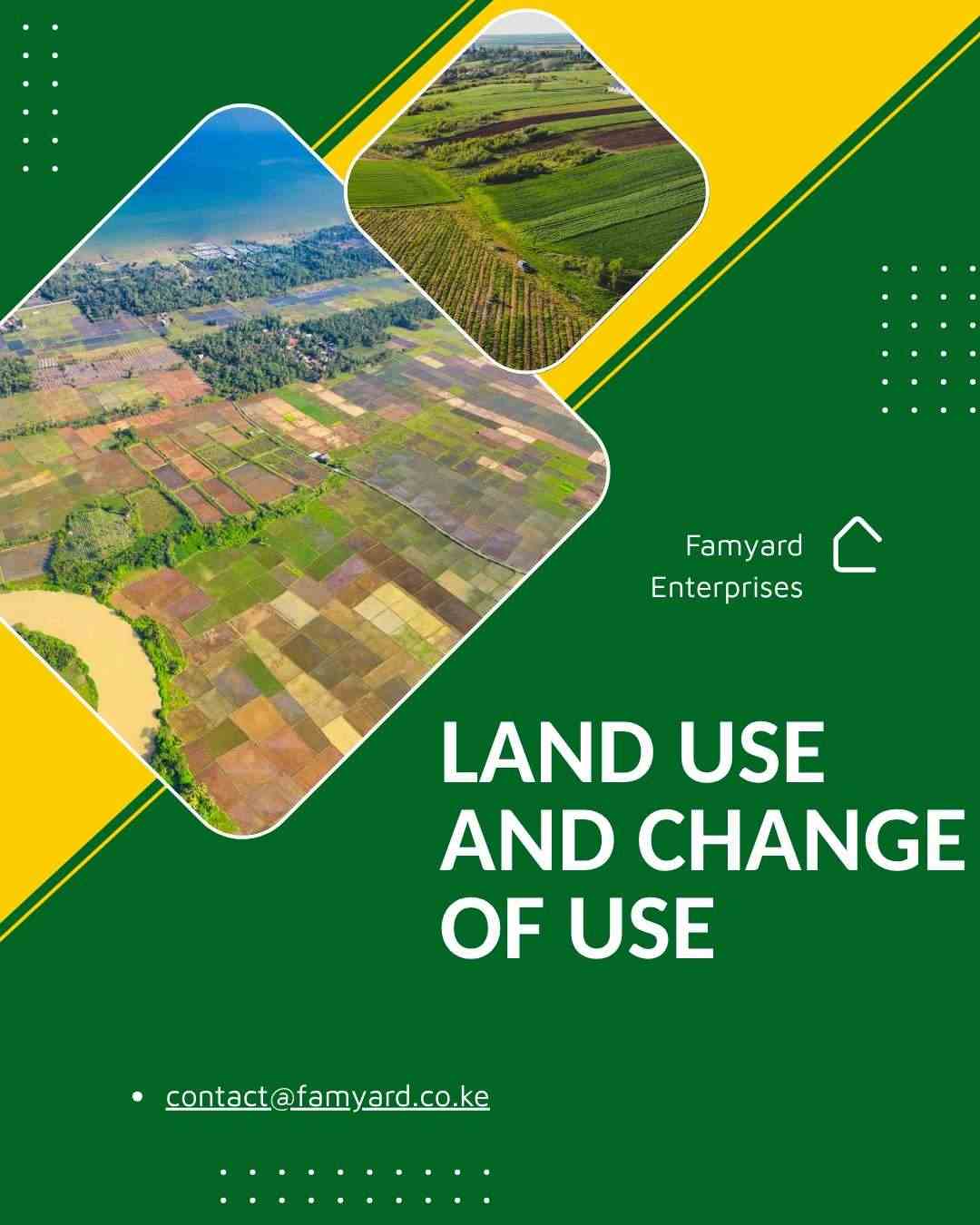Kenya’s land use framework operates under a structured system that governs how land can be utilized and transformed from one purpose to another. Understanding this process is crucial for you as a property developer, investor, and landowner seeking to maximize your land’s potential while remaining compliant with national regulations.
Kenya’s Land Use Categories

The Physical and Land Use Planning Act divides land into specific categories, each with designated purposes.
- Agricultural land serves farming and livestock keeping.
- Residential zones accommodate housing developments.
- Commercial areas support business activities.
- Industrial zones hold house manufacturing operations.
- Institutional land serves public facilities like schools and hospitals.
- Mixed-use developments combine multiple functions within a single area, reflecting modern urban planning approaches.
Each category comes with specific regulations governing density, building heights, infrastructure requirements, and environmental considerations.
The Legal Framework Governing Land Use
Kenya’s land use operates under several key pieces of legislation.
- The Physical and Land Use Planning Act provides the primary framework for spatial planning and development control.
- The Land Act governs land administration and management.
- The Environment and Land Court Act handles land-related disputes.

County governments also play a central role in land use planning through their respective County Spatial Plans and County Integrated Development Plans. These documents outline development priorities and guide land use decisions at the local level.
The Change of Use Application Process
Initiating a change of use begins with obtaining the correct application forms from the relevant county government’s physical planning department. You must provide detailed site plans, architectural drawings, and environmental impact assessments where applicable.
You should also have the required documentation, including a copy of the title deed, survey plans, and proof of land rates payment. For significant changes, such as converting agricultural land to residential or commercial use, additional studies may be required, including traffic impact assessments and utility connection feasibility reports.
Lastly, the county physical planning committee reviews applications based on compliance with zoning regulations, infrastructure capacity, environmental considerations, and alignment with county development plans. Nonetheless, public participation may be required for major developments that could impact surrounding communities.

Tips on Successful Change of Land Use
- Successful change of land use applications requires thorough preparation and professional guidance. Engaging with county planning offices early in the process helps clarify specific requirements and potential challenges.
- Understanding local development priorities can inform strategic decisions about proposed land uses. Counties often prioritize developments that align with their economic development objectives or address specific infrastructure needs.
- Market research should inform change of use decisions, ensuring proposed developments meet actual demand and generate sustainable returns on investment.
Start your land development journey today – Visit Famyard.co.ke to access expert guidance, connect with qualified professionals, and turn your land use vision into reality.
